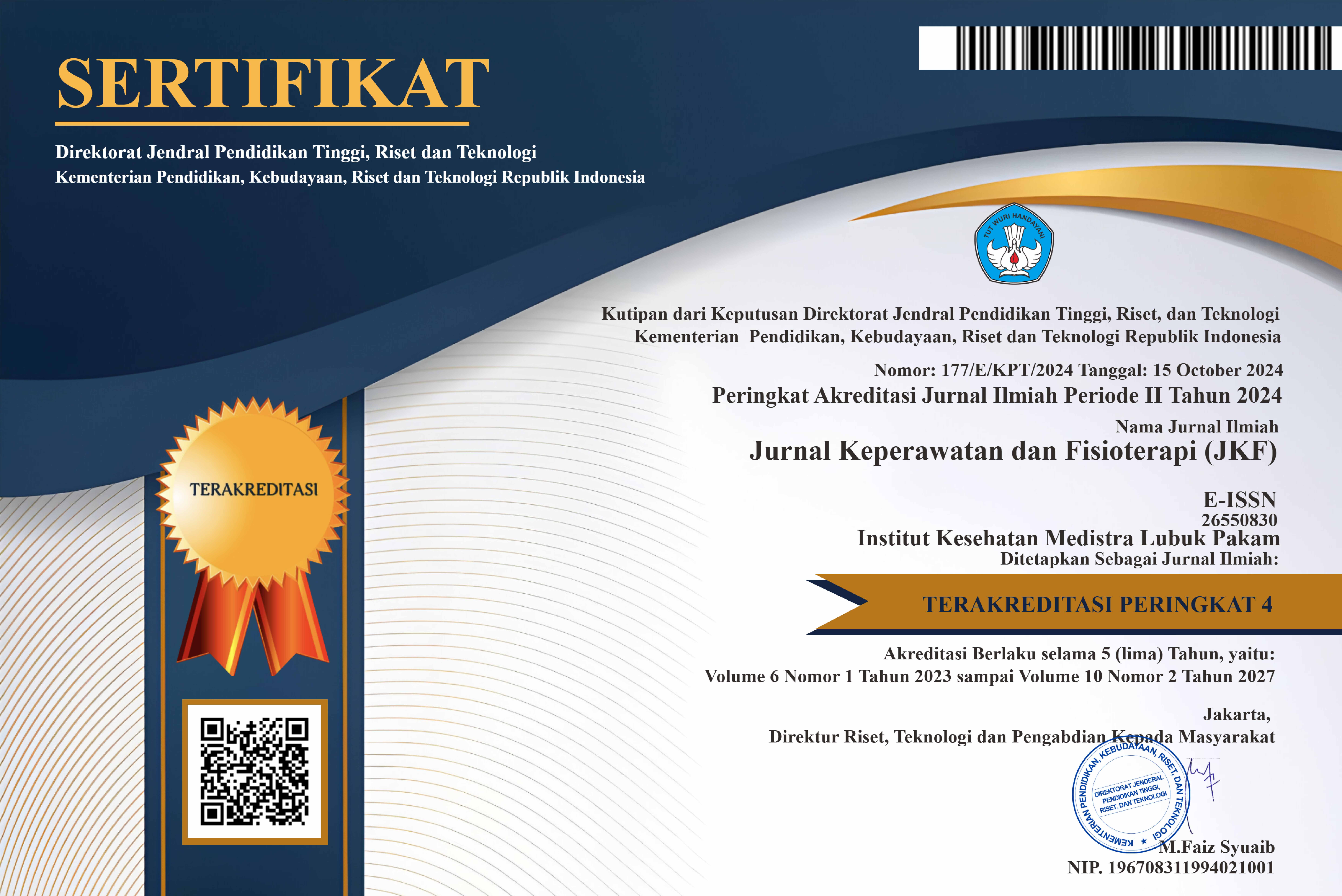PENGARUH AROMATERAPI INHALASI TERHADAP PENURUNAN NILAI KECEMASAN PASIEN GAGAL GINJAL KRONIK YANG MENJALANI HEMODIALISA
DOI:
https://doi.org/10.35451/jkf.v1i2.149Keywords:
Aromatherapy inhalation, anxiety valueAbstract
Aromatherapy inhalation was complemantary therapy that most effective and safe to used, the physicology problem was anxiety as the impact of chronic kidney deasese who underwent hemodialysis. The purpose of this research was to know the influence of aromatherapy inhalation on the decreased anxiety value of chronic kidney deasese who underwent hemodialysis at Grendmed Hospital Lubuk Pakam 2018. This research was quantitative research, with research design pra-experiment and used approach one group pretest–posttest. This research population of all the patient chronic kidney deasese who underwent hemodialysis at Grandmed Hospital Lubuk Pakam 2018. Sample as many 13 respodences with tecnique used purposive sampling. Statistic test used paired simple t-test with confidence level 95% (α = 0,05). The result of the research that there was influence of aromatherapy inhalation on the decreased anxiety value of chronic kidney deasese who underwent hemodialysis at Grandmed Hospital Lubuk Pakam 2018 with p value = 0,001. It is expected to the nurse to be able to apply the implamention the influence of aromatherapy inhalation on the decreased anxiety value of chronic kidney deasese who underwent hemodialysis to decrease dependency in farmacology therapy in decreasing anxiety.
Downloads
References
Argi, 2013. Aroma Terapi Herbal. Jakarta: Salemba Medika
Grosset & Giddes, 2010. Terapi sehat dengan pengobatan alternative. Bandung: Pustaka Hidayah.
Hidayati, 2011. Terapi Alternatif. Yogyakarta: Pradipta Publishing.
Hidayat. 2013. Metode Penelitian Keperawatan dan Teknik Analisa Data. Jakarta: Salemba Medika.
Jaelani, 2009. Aroma Terapi. Jakarta. Pustaka Populer Obor.
Moelyono, Dr. 2015. Aroma Terapi Tinjauan Aspek Kimia Medisinal. Yogyakarta: Graha Ilmu.
Muchtaridi, 2015. Aspek Kimia Aroma terapi. Bandung: Pustaka Hidayah
Notoatmodjo, S. 2012. Metode Penelitian Kesehatan. Jakarta: Rineka Cipta.
Prasetyono, 2013. Kiat mengatasi cemas dan depresi. Bandung: Tugu Publisher.
Report of Indonesian Renal Registry (IRR).2014: m.indonesianrenalreistry.org
Rustina, 2012. Hubungan antara lama menjalani hemodialisa dengan depresi pada pasien dengan sakit ginjal kronik.portalgaruda.org
Saryono & Anggraeni, M. 2013. Metodelogi penelitian kualitatif dan kuantitatif dalam bidang kesehatan. Yogyakarta: Nuha Medika
Sastroasmoro, Sudigdo. 2013. Dasar-dasar metodologi Penelitian klinis. Edisi 3 Jakarta: CV. Sagung seto
Setiati, Siti, 2013. Ilmu Penyakit Dalam. Jakarta Pusat: Interna Publishing
Solehati, Tetti. 2015. Konsep dan Aplikasi Relaksasi Dalam Keperawatan Maternitas. Bandung: PT. Refika Aditama
Sugiyono, 2012. Metodologi Penelitian Pendidikan. Bandung: Alfabeta
Wibowo, Yudhi. 2014. Keperawatan Medikal bedah Manajemen klinis untuk hasil yang diharapkan. Indonesia: Salemba Medika
Widyono, 2015. Aromaterapi Inhalasi sebagai Evidence Based Nursing pada pasien GGK yang menjalani
hemodialisa untuk mengurangi kecemasan. Indonesian Resource Journal
Witarsa, 2014. Pengaruh Aromaterapi Inhalasi Terhadap penurunan tingkat kecemasan pasien gagal ginjal kronik yangmenjalani hemodialisa di RSUD Denpasar.Portalgaruda.org
Downloads
Published
Issue
Section
License
Copyright in each article is the property of the Author.


























